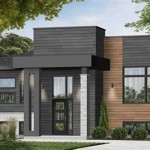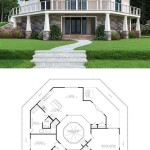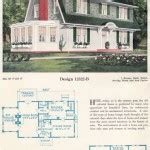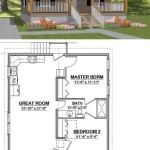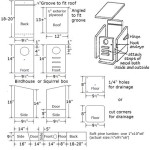House plans with courtyards are architectural designs that incorporate enclosed outdoor spaces into the home’s layout. These courtyards create a private and protected area, often surrounded by walls or other structures, that provides a seamless transition between the exterior and interior of the house. A classic example of a house plan with a courtyard is the traditional Spanish hacienda, where the courtyard serves as a central gathering and living space, surrounded by rooms and hallways.
Courtyards offer various functional and aesthetic benefits. As private outdoor oases, they provide a tranquil setting for relaxation, entertaining, and al fresco dining. They also bring natural light and ventilation into the home, creating a sense of openness and spaciousness. Additionally, courtyards can be landscaped with plants, fountains, and other design elements, transforming them into vibrant outdoor havens that enhance the overall ambiance of the house.
In the following sections, we will explore the various aspects and considerations of house plans with courtyards, from their design principles to their practical applications. We will also provide tips and ideas for incorporating courtyards into your own home design.
House plans with courtyards offer a unique blend of indoor and outdoor living, creating a harmonious and inviting atmosphere. Here are nine important points to consider when designing a house plan with a courtyard:
- Privacy and seclusion
- Natural light and ventilation
- Outdoor living space
- Connection to nature
- Landscaping and design
- Water features and fountains
- Security and access
- Orientation and sun exposure
- Integration with indoor spaces
By carefully considering these points, you can create a house plan with a courtyard that seamlessly blends the comfort and functionality of indoor living with the beauty and tranquility of the outdoors.
Privacy and seclusion
Privacy and seclusion are key considerations for house plans with courtyards. Courtyards offer a private outdoor space that is protected from the outside world, creating a sense of intimacy and security. This is especially important in urban areas where privacy can be limited. There are several design elements that can be incorporated into a house plan to enhance privacy and seclusion in the courtyard:
- Courtyard walls and fences: The height and design of the walls or fences surrounding the courtyard play a significant role in providing privacy. Higher walls and fences offer more seclusion, while lower walls or fences with decorative elements can provide a more open and inviting atmosphere.
- Landscaping: Strategic placement of trees, shrubs, and other plants can create natural barriers and enhance privacy. For example, planting a hedge around the perimeter of the courtyard can provide a dense screen that blocks views from outside.
- Building orientation: The orientation of the house and courtyard can also impact privacy. Courtyards that are positioned away from the street or neighboring properties will naturally offer more seclusion.
- Limited access points: Controlling access to the courtyard through a single gate or doorway can help to maintain privacy and security. This is especially important if the courtyard is located near a public area or walkway.
By incorporating these design elements, you can create a courtyard that provides a private and secluded outdoor oasis for relaxation, entertaining, and al fresco dining.
Natural light and ventilation
Natural light and ventilation are essential considerations for house plans with courtyards. Courtyards can bring an abundance of natural light into the home, creating a bright and airy atmosphere. This can reduce the need for artificial lighting, saving energy and creating a more comfortable and healthy living environment. Additionally, courtyards can promote natural ventilation by allowing air to circulate freely through the house. This can help to regulate temperature, reduce humidity, and improve indoor air quality.
- Windows and doors: The placement and size of windows and doors in the courtyard can significantly impact natural light and ventilation. Large windows and doors allow more light to enter the home and create a stronger connection between the indoor and outdoor spaces. Operable windows and doors allow for cross-ventilation, which helps to circulate air and keep the home cool and comfortable.
- Courtyard orientation: The orientation of the courtyard can also affect natural light and ventilation. Courtyards that are oriented towards the south or west will receive more sunlight, while courtyards that are oriented towards the north or east will receive less sunlight. Courtyards that are surrounded by buildings or other structures may also have limited access to natural light and ventilation.
- Landscaping: Landscaping can also play a role in natural light and ventilation. Trees and shrubs can provide shade and block sunlight, while carefully placed plants can help to direct airflow and promote ventilation. For example, planting a row of trees along the western edge of the courtyard can help to block the hot afternoon sun.
- Water features: Water features, such as fountains and pools, can also contribute to natural ventilation by evaporating water and creating a cooling effect. The movement of water can also help to circulate air and improve indoor air quality.
By carefully considering these factors, you can design a house plan with a courtyard that maximizes natural light and ventilation, creating a more comfortable, healthy, and energy-efficient home.
Outdoor living space
Courtyards offer a unique opportunity to create an outdoor living space that seamlessly blends with the indoor areas of the home. This extended living space provides a versatile and inviting area for relaxation, dining, entertaining, and other activities. Here are four key points to consider when designing an outdoor living space in a house plan with a courtyard:
- Functionality and purpose: Before designing the outdoor living space, it is important to consider how it will be used. Will it be primarily used for dining, lounging, entertaining, or a combination of activities? Defining the primary function of the space will help to determine the layout and design elements.
- Furniture and amenities: The furniture and amenities in the outdoor living space should be carefully chosen to complement the overall design and functionality of the space. Comfortable seating, tables, and lighting are essential for creating a welcoming and inviting atmosphere. Additionally, consider adding features such as a fireplace, water feature, or outdoor kitchen to enhance the functionality and enjoyment of the space.
- Privacy and seclusion: If privacy is a concern, consider incorporating design elements such as privacy screens, hedges, or trees to create a more secluded outdoor living space. This is especially important if the courtyard is overlooked by neighboring properties or public areas.
- Connection to the indoors: The outdoor living space should be seamlessly connected to the indoor areas of the home. This can be achieved through large windows and doors that open up the courtyard and create a natural flow between the interior and exterior spaces.
By carefully considering these factors, you can create an outdoor living space in your house plan with a courtyard that is both functional and inviting, providing a seamless extension of your home’s living areas.
Connection to nature
House plans with courtyards offer a unique opportunity to connect with nature and bring the outdoors into the home. Courtyards can be designed to incorporate a variety of natural elements, such as plants, water features, and natural materials, creating a serene and tranquil outdoor oasis. This connection to nature can provide numerous benefits for the occupants of the home, including reducing stress, improving mood, and enhancing overall well-being.
One of the key benefits of a courtyard is its ability to provide a private and secluded outdoor space where one can escape the hustle and bustle of everyday life and reconnect with nature. The enclosed nature of a courtyard creates a sense of intimacy and privacy, making it an ideal place for relaxation, meditation, or simply enjoying the beauty of nature. Additionally, courtyards can be designed to include features such as water fountains, wind chimes, or bird feeders, which can further enhance the sense of peace and tranquility.
In addition to providing a private sanctuary, courtyards can also serve as a valuable educational tool, particularly for children. By incorporating native plants and other natural elements into the courtyard design, homeowners can create an outdoor space that encourages exploration and learning about the natural world. For example, planting a variety of flowers and plants can attract butterflies and other pollinators, providing an opportunity to observe and study these fascinating creatures. Similarly, incorporating a small water feature can create a habitat for frogs, dragonflies, and other aquatic life, allowing children to learn about the importance of water ecosystems.
Overall, the connection to nature that house plans with courtyards offer is a valuable and enriching aspect of these designs. Courtyards provide a private and secluded outdoor space where one can relax, recharge, and reconnect with the natural world. They can also serve as a valuable educational tool, fostering an appreciation and understanding of the natural environment.
By carefully considering the design and landscaping of your courtyard, you can create a truly special space that will bring the beauty and tranquility of nature into your home.
Landscaping and design
The landscaping and design of a courtyard play a crucial role in its overall functionality, aesthetics, and ambiance. By carefully selecting plants, hardscaping materials, and design elements, homeowners can create a courtyard that is both beautiful and inviting.
- Plant selection: The choice of plants for a courtyard is an important consideration. Plants can be used to create privacy, add color and texture, and attract wildlife. When selecting plants for a courtyard, it is important to consider the amount of sunlight, water, and space available. Native plants are often a good choice for courtyards, as they are adapted to the local climate and require less maintenance.
- Hardscaping materials: The hardscaping materials used in a courtyard, such as paving, walls, and seating, can have a significant impact on its overall design. Natural materials, such as stone, brick, and wood, can create a warm and inviting atmosphere. Concrete and other modern materials can give a courtyard a more contemporary look. When selecting hardscaping materials, it is important to consider their durability, maintenance requirements, and compatibility with the overall design of the courtyard.
- Design elements: The design of a courtyard should be carefully considered to create a space that is both functional and visually appealing. Elements such as water features, lighting, and seating can be used to enhance the courtyard’s ambiance and make it more enjoyable to use. Water features, such as fountains or ponds, can add a sense of tranquility and movement to the courtyard. Lighting can be used to create different moods and highlight specific features of the courtyard. Seating should be comfortable and inviting, and should be placed in areas that receive both sun and shade.
- Maintenance: The landscaping and design of a courtyard should be low-maintenance to ensure that it remains a beautiful and enjoyable space for years to come. Drought-tolerant plants, native plants, and hardscaping materials that are easy to clean and maintain can help to reduce the amount of time and effort required to care for the courtyard.
By carefully considering the landscaping and design of your courtyard, you can create a truly special space that will bring beauty, tranquility, and enjoyment to your home.
Water features and fountains
Water features and fountains are a popular addition to house plans with courtyards, as they can add a sense of tranquility and movement to the space. Water features can also help to improve air quality and create a more inviting atmosphere.
- Reflecting pools: Reflecting pools are a classic water feature that can add a touch of elegance to any courtyard. They are typically made of stone or concrete and have a smooth surface that reflects the surrounding architecture and landscaping. Reflecting pools can be any size or shape, and they can be placed anywhere in the courtyard. They are a good choice for courtyards that receive a lot of sunlight, as they can help to create a cooling effect.
- Fountains: Fountains are another popular water feature for courtyards. They can be made of a variety of materials, including stone, metal, and ceramic. Fountains come in a wide range of styles, from traditional to modern, so they can be easily matched to the overall design of the courtyard. Fountains can be used to create a focal point in the courtyard or to add a touch of whimsy.
- Waterfalls: Waterfalls are a more dramatic type of water feature that can add a sense of movement and excitement to a courtyard. Waterfalls are typically made of stone or concrete and have a series of steps or tiers that the water cascades down. Waterfalls can be any size or shape, and they can be placed anywhere in the courtyard. They are a good choice for courtyards that have a lot of space, as they can create a stunning visual impact.
- Ponds: Ponds are a great way to add a touch of nature to a courtyard. They can be any size or shape, and they can be stocked with fish, plants, and other aquatic life. Ponds can be a great place to relax and enjoy the outdoors, and they can also provide a habitat for wildlife.
When choosing a water feature for your courtyard, it is important to consider the size, style, and function of the space. You should also consider the amount of maintenance that you are willing to do. Water features can require regular cleaning and maintenance, so it is important to choose a feature that you will be able to care for properly.
Security and access
Security and access are important considerations for house plans with courtyards. Courtyards are often private and secluded spaces, but they can also be vulnerable to intruders if they are not properly secured. Here are four key security and access considerations for house plans with courtyards:
- Gated entry: One of the most effective ways to secure a courtyard is to install a gated entry. The gate should be made of a sturdy material, such as wrought iron or steel, and it should be lockable. The gate should also be positioned in a way that makes it difficult for intruders to bypass it.
- Security lighting: Security lighting can help to deter intruders by making the courtyard more visible at night. Security lights should be placed around the perimeter of the courtyard and in any dark corners. They should be equipped with motion sensors so that they will turn on automatically when someone enters the courtyard.
- Surveillance cameras: Surveillance cameras can be used to monitor the courtyard and record any suspicious activity. Cameras should be placed in strategic locations so that they can cover all areas of the courtyard. They should be connected to a recording device so that the footage can be reviewed later if necessary.
- Landscaping: Landscaping can also be used to improve security. Plants can be used to create barriers and make it difficult for intruders to enter the courtyard. Thorny plants, such as roses or holly bushes, can be planted around the perimeter of the courtyard to deter intruders. Trees can also be planted to provide shade and make it more difficult for intruders to see into the courtyard.
By following these security and access considerations, you can help to create a courtyard that is both beautiful and secure.
Orientation and sun exposure
The orientation of a courtyard and its exposure to the sun are important considerations for house plans with courtyards. The orientation of the courtyard will determine how much sunlight it receives throughout the day, which can affect the temperature, comfort, and overall ambiance of the space. Courtyards that are oriented towards the south will receive the most sunlight, while courtyards that are oriented towards the north will receive the least sunlight. Courtyards that are oriented towards the east will receive morning sunlight, while courtyards that are oriented towards the west will receive afternoon sunlight.
The amount of sun exposure that a courtyard receives can also affect the choice of plants and materials used in the design of the space. Plants that require full sun will need to be placed in areas of the courtyard that receive the most sunlight, while plants that can tolerate shade can be placed in areas that receive less sunlight. Materials that are resistant to fading and UV damage should be used in areas of the courtyard that receive a lot of sunlight. Courtyards that are exposed to a lot of wind may require the use of windbreaks or other protective measures to make the space more comfortable.
The orientation and sun exposure of a courtyard can also be used to create different moods and atmospheres in the space. Courtyards that are oriented towards the south will be brighter and warmer than courtyards that are oriented towards the north. Courtyards that are exposed to the morning sun will be more cheerful and inviting than courtyards that are exposed to the afternoon sun. By carefully considering the orientation and sun exposure of a courtyard, homeowners can create a space that meets their specific needs and preferences.
In addition to the orientation and sun exposure of the courtyard itself, it is also important to consider the orientation and sun exposure of the surrounding buildings and structures. Buildings and structures that are located to the south or west of the courtyard can block sunlight and create shade. This can be a desirable feature in hot climates, but it can also make the courtyard feel dark and cold in cooler climates. Homeowners should carefully consider the orientation and sun exposure of all of the elements in their courtyard design to create a space that is both comfortable and inviting.
By carefully considering the orientation and sun exposure of your courtyard, you can create a space that is both beautiful and functional. A well-designed courtyard can provide a private and secluded outdoor oasis where you can relax, entertain, and enjoy the outdoors.
Integration with indoor spaces
One of the key benefits of a house plan with a courtyard is the seamless integration with indoor spaces. Courtyards can be designed to create a natural flow between the indoors and outdoors, making them an extension of the home’s living areas. This integration can be achieved through a variety of design elements, such as large windows and doors, open floor plans, and shared materials and finishes.
Large windows and doors are a common feature in house plans with courtyards. These openings allow natural light to flood into the home, creating a bright and airy atmosphere. They also provide a direct connection to the courtyard, making it easy to transition between the indoor and outdoor spaces. Open floor plans are another popular design element in house plans with courtyards. Open floor plans allow for a more fluid movement between the different areas of the home, including the courtyard. This creates a sense of spaciousness and makes it easier to entertain guests or keep an eye on children playing in the courtyard.
Shared materials and finishes can also help to integrate the courtyard with the indoor spaces. For example, using the same flooring material in the courtyard and the adjacent indoor areas can create a sense of continuity and make the transition between the two spaces less jarring. Similarly, using similar colors and textures in the courtyard and the indoor spaces can help to create a cohesive overall design.
By carefully considering the integration of indoor and outdoor spaces, homeowners can create a house plan with a courtyard that is both beautiful and functional. A well-designed courtyard can provide a private and secluded outdoor oasis that is seamlessly connected to the home’s living areas.
In addition to the design elements discussed above, there are a number of other ways to integrate indoor and outdoor spaces in a house plan with a courtyard. For example, homeowners can install outdoor kitchens or fireplaces, which can be used to entertain guests or simply enjoy the outdoors. They can also add water features, such as fountains or ponds, which can help to create a more relaxing and tranquil atmosphere. By carefully considering the integration of indoor and outdoor spaces, homeowners can create a truly unique and special home.










Related Posts

